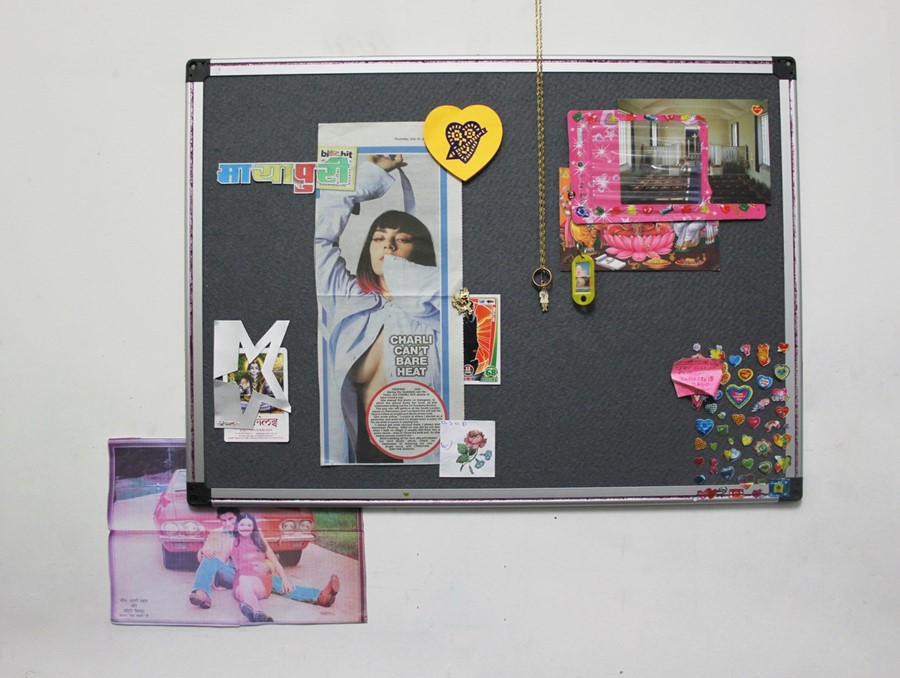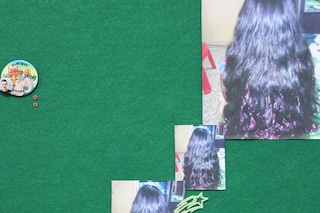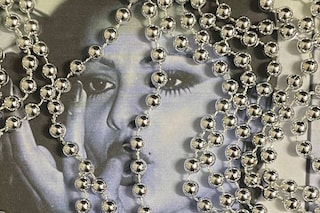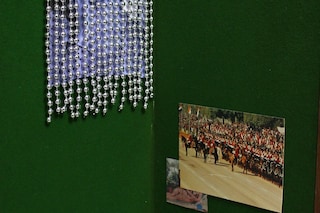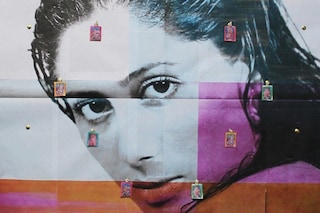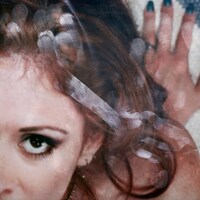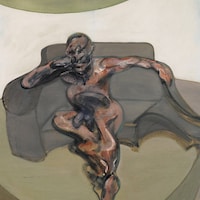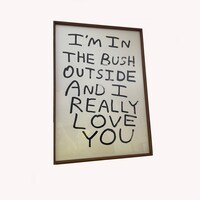Artists Nina Mhach Durban and Athen Kardashian draw on their Indian heritage, their matriarchal icons, and the allure of pop culture and Bollywood to create nostalgic artworks reminiscent of their teenage bedrooms
British Asian artist duo Nina Mhach Durban and Athen Kardashian have mastered the art of gathering. The pair have culminated a vast archive of found imagery, objects and remnants of their 00s childhoods in female-centric Indian homes. Kardashian explains: “This is eight years of Nina collecting images online and eight years of me collecting items, found objects, notes and letters from the floor.”
First meeting on their art foundation course, the artists proceeded to pursue their individual visual practices. While remaining friends, it was not until four years later that Kardashian invited Durban to their now shared studio to join together their respective archives, creating their first collaborative artwork “Eyes adorn your path”.
Their body of work – some of which is currently on display in the group show The Ultimate Bootleg Experience at studio/chapple in Deptford – is an aesthetic exploration of nostalgia, migration and diasporic femininity, honouring the matriarchal figures in their lives. Framed by the familiarity of school notice boards, whiteboards and the ubiquitous cork boards found in so many teenage bedrooms, the artists transform the intimate conversations that take place in their Brixton studio into kitsch shrines capturing the humility and glamour of the Indian women they have looked up to. The works are reminiscent of their own nanis’ [maternal grandmothers] shrine-like compositions of images and objects that exist on the mantels, fridges and cupboards of their grandparents’ homes.
The artists make use of Bollywood imagery throughout many of their compositions, notably from Durban’s extensive archive of found images. They’re particularly drawn to images from the 60s and 70s Bollywood scene, a tender nod to the films watched at their grandparents’ homes also distinct to Durban’s grandparents’ time of migration to London.
The ornamentation and incandescence of Bollywood aesthetics sit with ease alongside found objects of a more humble nature – a gesture from the artists acknowledging the distinction between so-called high and low art.

Deeply personal and explorative conversations exist beneath the surface of the work and remain private between the artists, however, the visual experience of the work is coded with imagery distinct to their Indian heritage and London upbringings in the 00s, providing intimate entry points for the audience.
Kardashian elaborates on navigating the balance between solemnity and pleasure within the work, telling Dazed, “There’s something so private and exhibitionist about our nanis that relates to the work itself. There’s a sacredness of showing but withholding.” The duo hone in on the details excavated from their conversations alongside their years of rigorous archiving – of secrets, anecdotes and memories; their boards existing as playful yet sincere conversations.
In their questioning of sacredness, the artists draw from the fan culture they encountered and participated in as children to explore frameworks of iconography and worship. This practice contextualises their families’ Hindu faith and proposes a resemblance between spirituality and Western fan culture. The artists position a Liam Payne badge alongside Durban’s nani’s bindis and a Charli XCX newspaper clipping beneath an incense stick as playful nods to how internet culture has mediated their sensibility towards the importance of faith in their families.
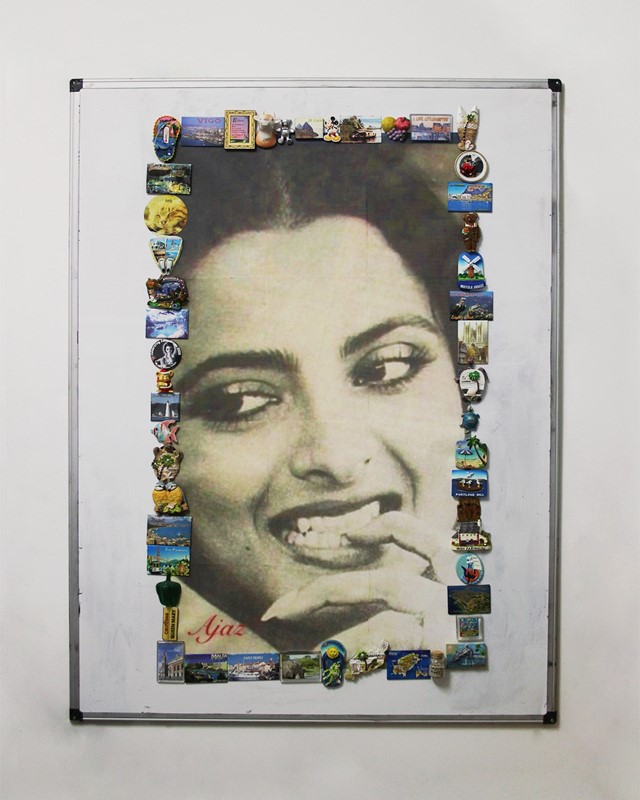
A vivid visual language permeates the body of work, directly inspired by their childhood selves, as Durban explains: “Being an Indian child in the early 2000s, the first thing I think of, weirdly, is the feeling of wearing glittery suits, sharp sparkles, really tight bangles and a bindi.” This reflects the innocent lens with which they looked up to the Indian women in their lives, in turn encouraging the artists to pursue modes of storytelling centring female homemakers within stories of migration.
Beautifully articulating their motivations, Durban says, “The image of the migrant is often a man going somewhere to be able to make money for his family, that kind of homemaking… but then what is there to say about the woman who, as well as this, are raising the children and creating a beautiful space for the family to exist in?”
These are just some remnants of the artists’ private conversations existing quietly but powerfully within their visual exploration. The aesthetic consideration and spatial awareness with which they deal with their families’ respective legacies of migration is a testament to their layered understanding and sentimental perspective of diasporic existences and the pride of movement.
A selection from the artists’ work is on display in the group show The Ultimate Bootleg Experience at studio/chapple in Deptford, London, until April 30, 2023.
Join Dazed Club and be part of our world! You get exclusive access to events, parties, festivals and our editors, as well as a free subscription to Dazed for a year. Join for £5/month today.
